|
If you've been following this project, I'm happy to say that I can finally declare it complete! A short recap: after three tries at getting the right combination of featherweight fabric, proper colour (whiteness), transparency and drape, I finally received the four metres of angelic silk voile I'd purchased from a supplier in Ontario to make my apron and fichu (neckerchief) for my re-creation of Lady Mary Howe's gown in the portrait by Gainsborough. And the two pieces are done! The fichu was simple enough: I hand-hemmed all the edges and then pinned and slip-stitched a lace edging all around, trying to mimic what I could see of Lady Howe's fichu in the portrait. What I liked about this extremely sheer silk was that the pretty ruching on the stomacher could still just be seen under it, a very nice effect! The apron took a little more time and thought. This silk voile was so sheer and so delicate that I feared that an attempt to hand-embroider it (which would require stretching it in an embroidery hoop) would prove beyond even my reasonably good embroidering skills. So I looked for an alternative, and found it in a length of very old vintage lace with floral motifs delicate enough and of the right size to enable me to hand-appliqué them onto the sheer fabric. This ended up being more fun than I'd expected. I'm reasonably happy with the result. To read on, please click "Read More", below right
2 Comments
While enjoying the fresh cherries picked from our own tree today, it occurred to me that cherry red is one colour which seems to permeate fashion images throughout the centuries. It is one of those hues that requires panache to wear, and a certain level of self-assurance, perhaps even courage. Yet it's been embraced by every era I can think of, and is always ready to make a statement about its wearer, whether as an entire gown or costume, or accessory. The men haven't been left out either!
This has been such a devastatingly sad and bizarre year, hasn't it? The pandemic we'd hoped would never happen has profoundly changed lives around the world, and left so many dead. As a creative person, keeping inspired and motivated during this moving horror has been a challenge, as I'm sure it has for so many. Yet it's been that ability to turn to creative work that has helped me, and I hope others, maintain our sanity and sense of fun. Nonetheless, what's been going on all around us can't help but have an effect. During this past year, I've found myself ignoring projects I should be working on, procrastinating over others, having difficulty applying myself consistently on many, but then suddenly diving into a flurry of activity on tangential things. This is what seems to have happened lately; I found myself drawn to complete two ca. 1770-75 gowns, both from the same pattern I devised, both in cotton (which I rarely work with), and both almost entirely hand-sewn. Both were in a sense rather pointless projects, since I doubt I'll be going anywhere in them anytime soon, but both gave me joy to make. Binge-watching old Star Trek episodes on Netflix provided hours of silly entertainment in the late evenings while I stitched away on one gown, then the next. I almost began a third (and fourth!) gown -- had all the fabric laid out and yardage planned -- before I stopped myself and realized I should probably try to get back to focusing on pattern-drafting! A nasty kitchen mishap in March had left me with a partly numb forefinger on my right hand, which was a good way to avoid pattern drafting -- until now. I have most of my control of that finger back, so it's time to return to my "real" work. So here are some photos of the two recently finished cotton gowns, along with a video just for fun! By the way, over the next few weeks I'll be finishing work on the pattern for this 1770-75 gown design, along with a somewhat different ca.1760-65 gown (see my blog post on the "Countess Howe" pink gown). Both designs will be included in one pattern, along with several accessories. I'll be sure to announce here once the pattern is available! (Click on "Read More" below, to continue)
Every so often I have a customer contact me to say they're having difficulty figuring out how to open and/or print a 'History House' pattern at home that they've just downloaded from my Etsy shop. Printing these patterns is usually a matter of just 3 or 4 simple steps once the PDF pattern file has been opened with Adobe. I'm hoping the guidelines below will help with any questions that arise, and will explain some of the principles behind PDF patterns. My main (and first) recommendation to all purchasers of 'History House' PDF patterns is to read the Printing Instructions that come with the pattern download package, and follow them in order, step-by-step. Otherwise, please look through this article to see if any of the advice might help. Getting started with History House PDF patterns:Below is a copy of the Printing Instructions document that comes with every History House PDF pattern. All our patterns are set up to be used with Adobe Reader software (see below). If you're thinking of buying a PDF History House pattern, and you've never tried one before, I recommend looking at these instructions, and then trying the printing process with one of the simple free patterns (see the link just below, or at the very bottom of this article).
A (little) bit of techno-babble:I love what today's technology can do, but I'm definitely not capable of explaining in any detail how it does its magic! I leave that to the geek squad. But here are the basics about History House PDF sewing patterns: (click on "read more", below right, to continue)
My motto in historical reproduction costuming has always been that "small things make a big impact", in other words it's the details that can really make a replica look -- at least from a reasonable distance -- as close as possible to an authentic antique garment. Finding the right style, colour, type, weight, and width of lace (especially when shopping online) can be a challenge that can take hours, if not days, of searching. Even modern synthetic laces aren't necessarily inexpensive -- often it's one of the biggest investments, aside from the fabric itself, that will go into re-creating an historical garment. So it's worth taking a careful look at some of the considerations involved in choosing laces for reproductions.
(Click on "Read More", below right, to continue) In the Pink!
As of the date I write this (September 9, 2020), the project is nearing completion! I'm beginning to be able to see the final result. Best of all, despite definitely not being a pink person (I can't think of a single pink garment in my closet of "modern" clothes), I have to say that the colour of this beautiful iridescent silk has grown on me. Its tone shifts with indoor or outdoor lighting (more lavender with the latter), and the pleats and ruffles create little pools of reflection in the shot silk, which has a white coloured warp and bright pink weft. The camera unfortunately fails miserably at capturing the scintillating nature and luscious colour of this silk. (Click on "Read More", below right, to continue...) In this next installment of the project to re-create the ensemble in Gainsborough's beautiful painting of Countess Howe, all the undergarments are now completed, and Marguerite (the mannequin) is dressed, ready to be fitted out further. But first, for reference, here is another copy of Gainsborough's magnificent portrait of Lady Mary Howe, which I've digitally cropped in order to focus on the garments: And here is Marguerite in her underthings:
(Click on "Read More" at right below, to continue...) "One thing is new, which is, there is not such a thing as a decent old woman left, everybody curls their hair, shews their necks, and wears pink..." [from The Cut of Women's Clothes by Norah Waugh, quote attributed to Lady Jane Cole, 1754]. In this current time of pandemic, I've found it's been difficult to focus as consistently and effectively on creative projects as I usually do. In fact, it's been hard to just get started -- on anything. I think it's taken weeks to adjust psychologically to a reality few of us could have imagined. Yet now I feel that concentrating on a new project, even if it means a little mental pushing and shoving, is a good thing.
Not that I needed yet another thing to add to my seemingly limitless "to-do" list, but maybe something exciting enough to jump-start the Muse. What I really needed was inspiration to launch; that impetus came partly from an incidental chat with an online friend, and partly from the rediscovery of a long forgotten length of silk taffeta that I'd stuffed in the back of a cupboard years ago. Although a project like this may be rightly judged a bit self-indulgent, it is also a means of elevating the spirit and alleviating some of the stress and melancholy of the present time. Sometimes going on a journey is the best medicine for ennui, and in this case it's a journey back in time to re-create a lovely 18th century gown. (Click on "Read More", below right, to continue) January 20, 2020... It's taken me a few months to get to back to this blog subject, but one of my New Year's resolutions was to try to complete as much of my planned but unfinished work from 2019 (and previous years) as possible. So here, finally, are some details of this 2019 project, from inception to finished ensemble. I think it was the fortuitous find of an almost-matching modern silk taffeta which prompted me to get this ensemble made at last, but it had been in my creative consciousness for some time. In 2019 I decided to just get on with it! Background Notes to Making the Replica: The gown and petticoat are modeled as precisely as I could after an extant ca. 1750 to 1755 robe à la française (usually referred to in English at the time as a "sacque" or "sack" gown or dress) which was offered at a private sale a number of years ago (you may recognize the photos of the original). The notes below give an overview of the project, and following these are details of the steps I took to complete the ensemble. There were some intriguing features of the extant gown that drew me to it, aside from the striking use of the striped textile: (a) First, and most noticeable were the exaggerated but beautifully decorated cuffs (see photo). This style was referred to at the time as "manche à la raquette" (racquet-like sleeve) for obvious reasons, but was a very fleeting fashion. The gown itself was transitional, just on the cusp between the more severe and simple modes of the two previous decades, and the explosion of ornamentation that followed in the 1760's and 1770's. The fact that the owner of this gown chose a sleeve type that was about to go completely out of style (in fact already a little "démodé"), is interesting in itself. I toyed with the idea of making the more fashionable (by 1755) flounced cuffs for the sleeves, but in the end decided I'd replicate the gown exactly as it was, fashion warts and all.
(Click on "Read More" at right to see the rest of this article) Another year is already coming to a close! I've been working on this guide to Edwardian lingerie on and off for several weeks, and have finally managed to pull it all together in one article. So here is my detailed survey of Edwardian lingerie -- what to wear and how to wear it. I hope it will answer all those questions about the unmentionables of this era, and be enjoyable too! It's quite a long article, but you can scroll through to whatever most interests you (click on the title above, or on "Read More", to access the article). By the way, you can find the 'History House' sewing patterns of a number of the items featured in this article at the link below. |
AuthorPatricia Preston ('The Fashion Archaeologist'), Linguist, historian, translator, pattern-maker, former museum professional, and lover of all things costume history. Categories
All
Timeline
March 2024
|
||||||




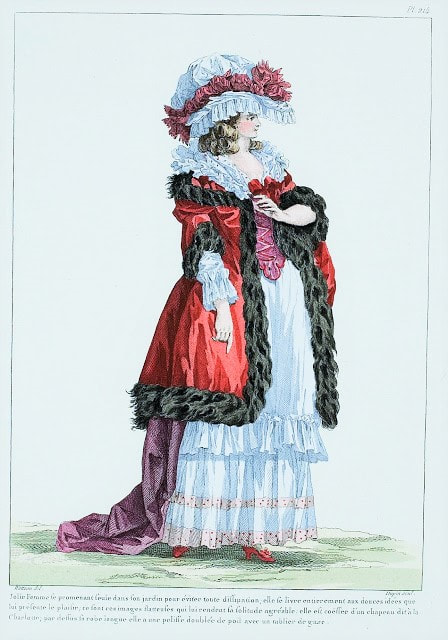








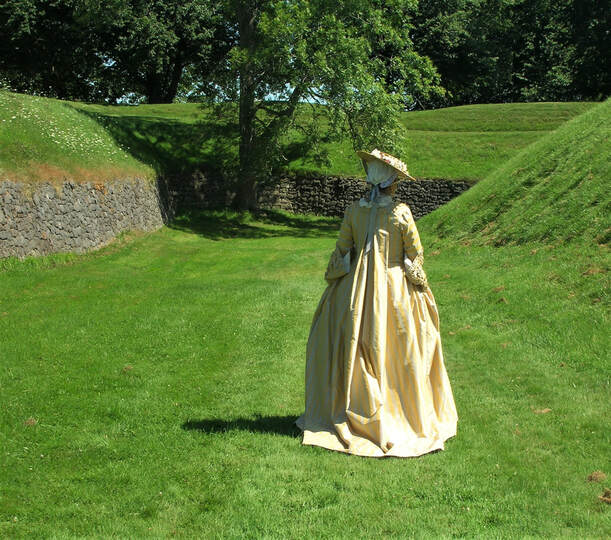
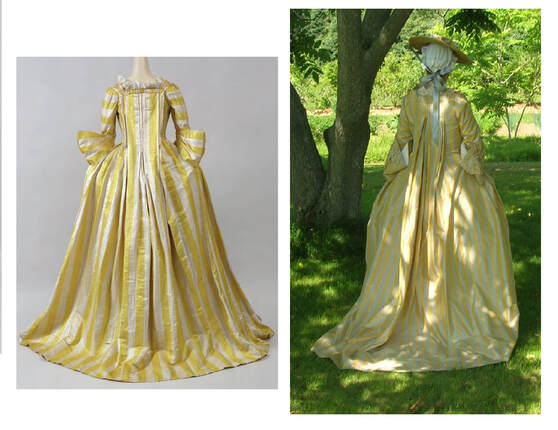
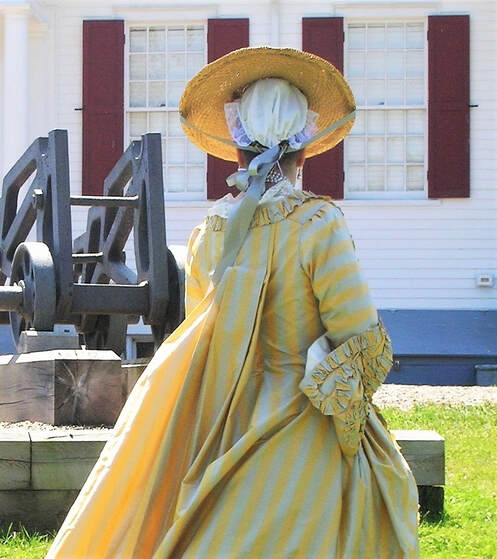
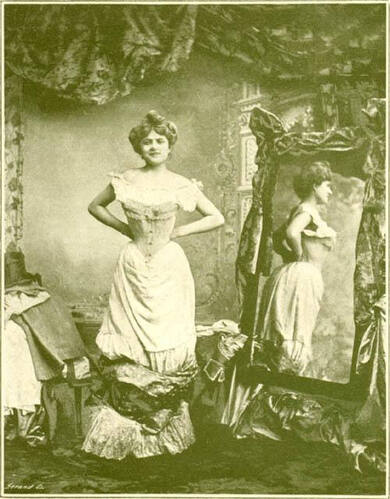
 RSS Feed
RSS Feed